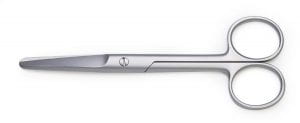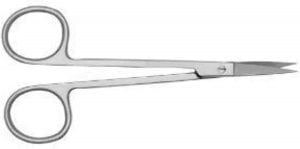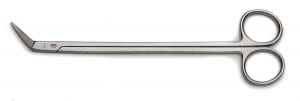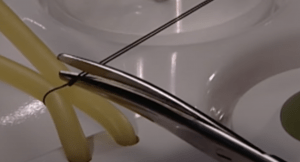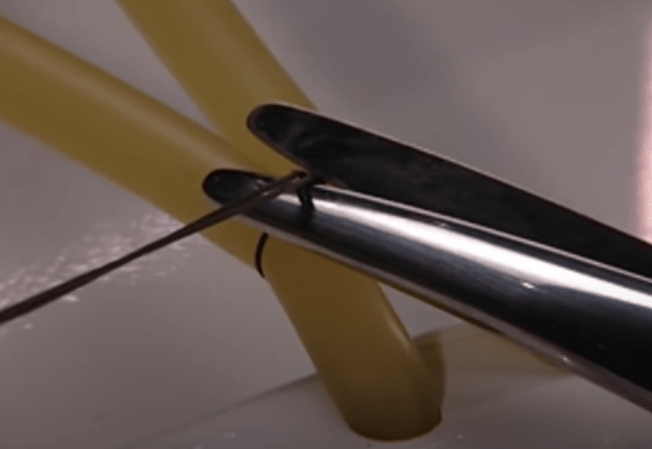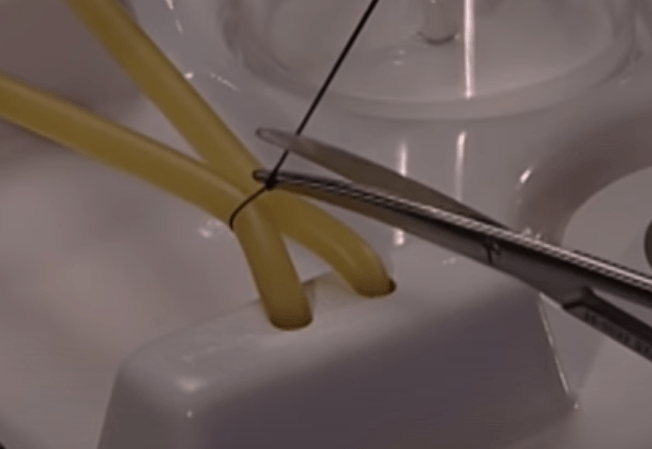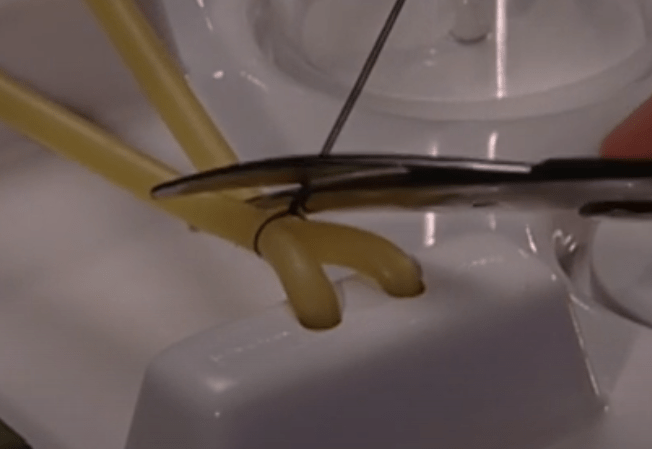Instrument Handling: Scissors
Scissors
Like needle drivers, scissors are held in the thumb and ring finger. This allows for the tip of the scissors to remain stable while the arm supinates and pronates.
A common error is to hold the scissors in the thumb and either the middle or index finger. This swings the tip of the scissors to the side and reduces control. The index finger is used to support the scissor, and can be placed on the screw head for maximum control.
There are several kinds of scissors used in the operating room.
Mayo scissors are heavy scissors that can be straight or curved. Straight Mayos are often called “Suture Scissors.”
Metzenbaum scissors or “Metz” are used for fine dissection and cutting. They are most frequently slightly curved. A common mistake is to use Metzenbaums to cut suture, which dulls the scissors and renders then less useful for dissection.
Iris scissors are even finer than Metzenbaums and are used for cutting fine structures. They are short, straight, and sharp.
Potts scissors are angled and most frequently used for cutting into vascular structures, as in a venotomy or arteriotomy.
Suture Cutting Task
When cutting suture, it is important to know how long to cut the suture in order to reduce the risk of the knot unravelling. You must be able to see both the ends of the scissors (in order to make sure you aren’t cutting tissue inadvertently) and also the knot itself to make sure that you know how long the suture tails will be. You can change the angle of the suture and/or the angle of the scissors to enable adequate view. You can also stabilize the scissors by supporting the arm or hand on the patient, the table, or your other arm.
Common Errors:
A common error is for the suture scissors to obscure the knot, which risks cutting the suture too short.
Another common error is to use the wrong scissors. Using fine dissecting scissors like the Metzenbaum or Iris scissors risks dulling the scissors.
Another common error is to cut with the belly or crotch of the scissors instead of the tips. This error is compounded when the tips of the scissors aren’t well visualized, which risks cutting inadvertent structures.
Suture Cutting Task:
To practice suture cutting, tie multiple knots. You will be evaluated on speed and precision.
Suture Cutting Self Assessment:
Suture Cutting Expert Assessment:
